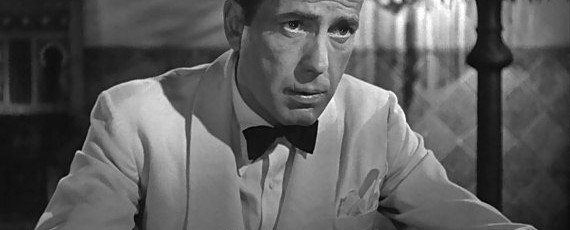Vulnerability in acting
There is a unique quality some actors possess, which greatly assists them in earning the empathy of the audience. Let’s call is “vulnerability.” It is that sense you get about certain people that they might be fragile or breakable, more than they appear to be. It is NOT necessarily the sense that they could break in two at the arrival of the nest stiff breeze. But it is something the actor communicates, that under the visible exterior, under what the audience sees is a human being who can be damaged.
We root for such human beings to survive, because we ourselves want to survive, generally. I can’t think of too many enormously successful actors who do not or did not have this quality. Even the real tough guys, like Bogart, or Bruce Willis, have it. Watch Bogart in Casablanca as he tries to push the love of his life out of his life, or Willis in Die Hard as he looks at a world bent on his destruction and seems to ask, a quizzical look on his face, “what did I do to deserve this”? We can love these men at these times, because they are no longer simply bigger than life and indestructible icons. They hurt, just like us.
This is a wonderful quality for an actor to have. It can be developed. Like all the qualities of an actor, YOU DO NOT NEED TO BE BORN WITH IT! Art is NOT an elitist club for those born with “extra sensitivity”, or some such rot. Art is for everyone, and anyone can be an artist, and a good one. Anyone who tells you otherwise is lying to you, for some reason I wouldn’t care to speculate on here.
All human beings possess a degree of vulnerability. It is a Human Common Denominator, a quality and experience we share. We all endure life to some extent. We all suffer through life to some degree. Some people hide the suffering better than others. Vulnerability is generally the ability to hide the suffering to a just slightly UNSUCCESSFUL extent, so that it is there and visible to those who wish to see it. It can make a performance darkly comic (as with Bruce Willis performances in Die Hard), or rich and sad (Bogart in Casablanca). The attempt is there to hide the fact that there is pain, but it isn’t entirely successful and the audience says “Ah! I see that he’s in pain! Look at him try to hide the pain! Poor guy.” By the way, that pain can be emotional, physical, spiritual, you name it. So long as the character feels it and tries to hide it and keep going, he’s vulnerable.
And for the record, characters who simply whine and suffer are NOT vulnerable or likable. Neither are human beings who whine and suffer. Generally, a large part of the audience will wish to take such a character, slap them around and yell at them to grow up. Such characters can be funny, or pathetic. But they can never be lovable. Actors who specialize in such roles will not be much beloved, either, as a rule.
We love the actor who is strong, but human. We love to know he hurts like us, but that he (or she) perseveres IN SPITE of their pain. We honor that artist. (This quality can be found in any art form.)
This is a quality you can develop. They key is to be able to create pain for the character to feel, and then to have the character hide the pain, though it’s still there, and to keep going. Start with this exercise.
_______________
EXERCISE: Select a scene you are familiar with. Decide in what way your character might be suffering in the scene (even if it’s a comedy). Describe the reason for his or her suffering in one sentence, get a very clear idea of it. Now, with a partner if possible, play the scene through five times and play the suffering OVERTLY, openly, without any attempt to hide it whatsoever. Keep doing this until you can really play the pain, and know exactly how to turn it on and off.
Now, part two. Play the scene five more times, feeling the pain as the character and yet persevering, keeping a stiff upper lip, hiding the pain without losing the fact that there is pain there. Do it more than five times as needed, but not less than five times. Don’t stop until you’re sure you can let a character experience pain, try to hide it, and persevere. You may need to work at this for several days. Always start with the first part of the exercise, experiencing the pain overtly and openly. Then, experience the pain but persevere and try to hide it.
